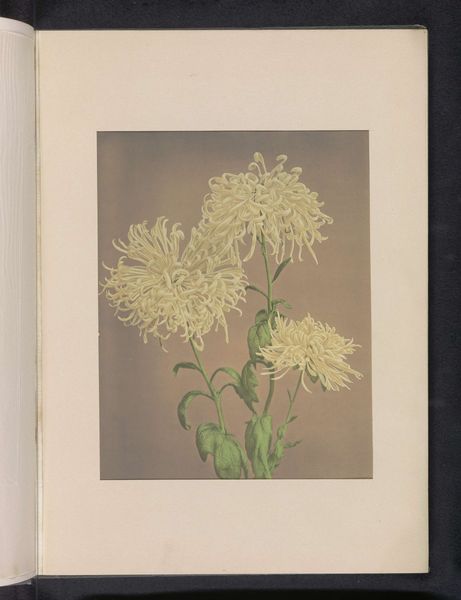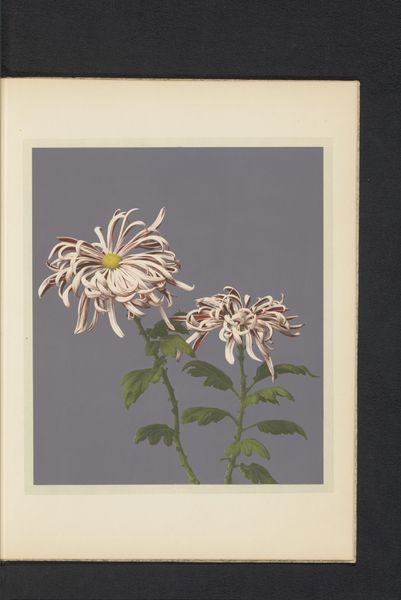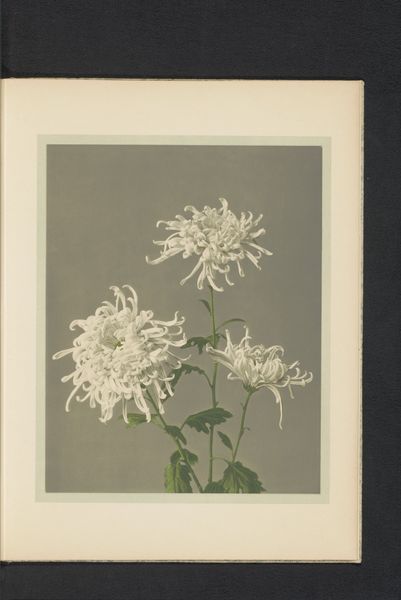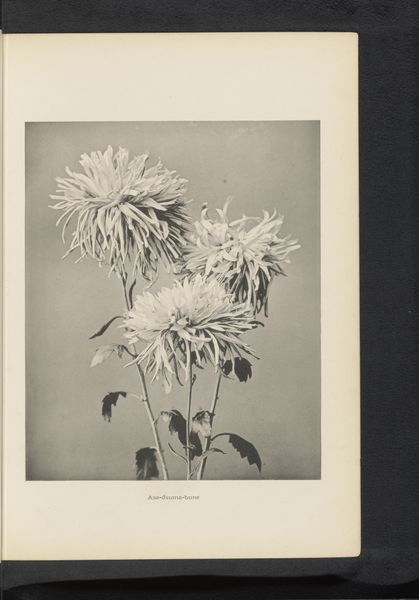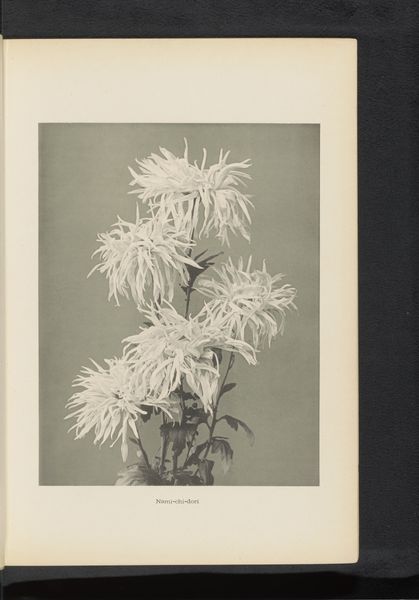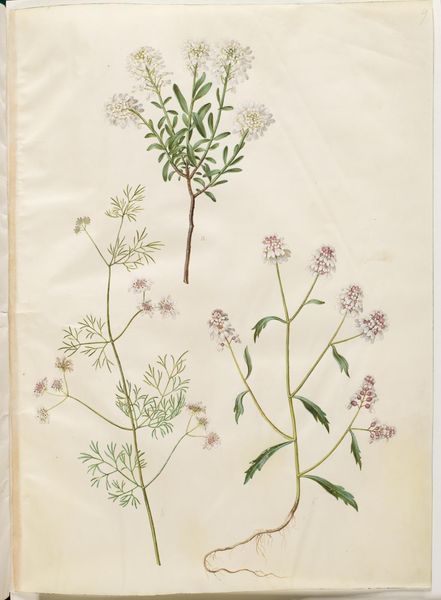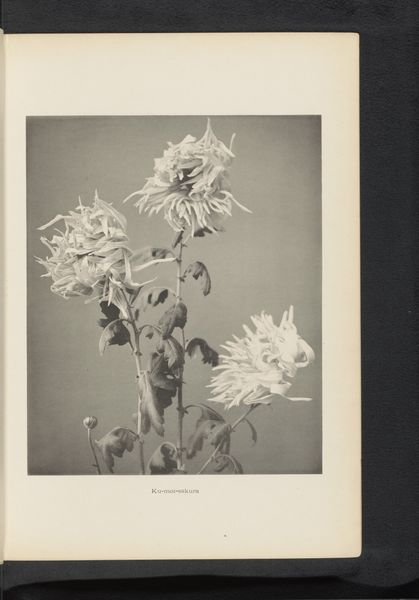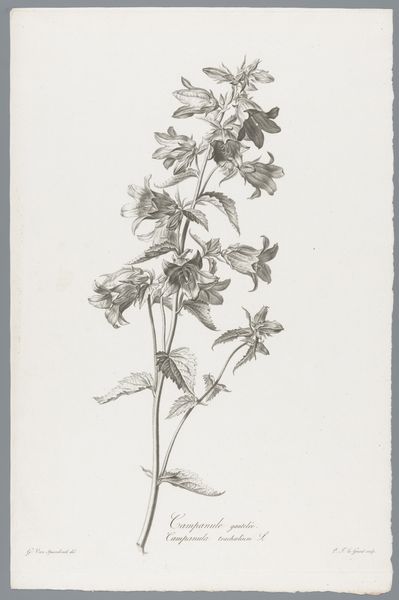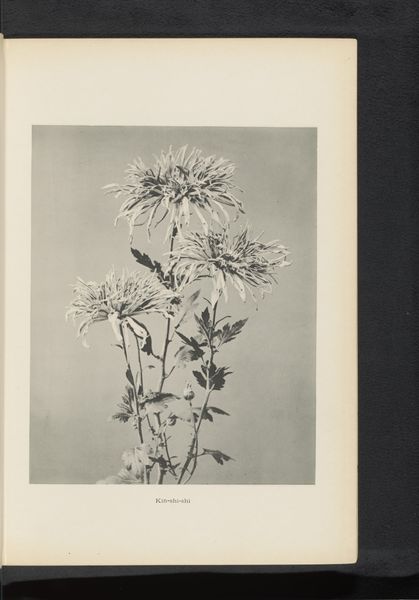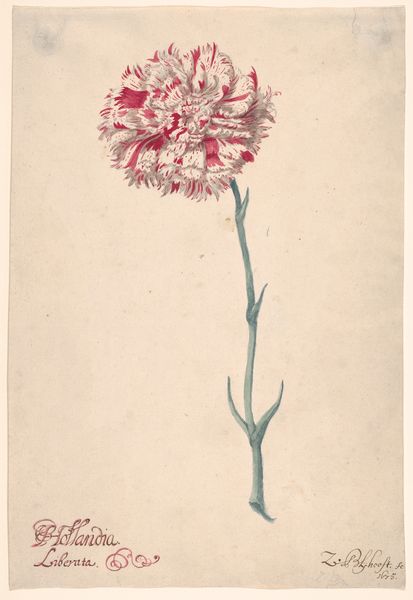
#
coloured pencil
Dimensions: height 266 mm, width 222 mm
Copyright: Rijks Museum: Open Domain
Editor: So, here we have Kazumasa Ogawa’s "Three Pink Chrysanthemums," made before 1897, using watercolor. They look almost like fireworks frozen in time. What do you see in this piece? Curator: Chrysanthemums, particularly in Japanese art, carry immense symbolic weight. It’s the symbol of the Imperial family and represents longevity and rejuvenation. Do you see how these chrysanthemums, with their layered petals, seem to be almost radiating outwards? Editor: Yes, they have a bursting effect. Does the number three have any significance? Curator: Interesting question. Three is a significant number in many cultures, often representing completeness or a trinity. In this context, perhaps Ogawa is hinting at a holistic representation of life, growth, and perhaps, the three stages of life itself. Editor: So it's not just a pretty flower, but a multi-layered image. Curator: Exactly! The choice of pink, too, isn’t accidental. It could be associated with femininity, delicacy, or even mourning, depending on the cultural context and the shade of pink used. Remember, Japonisme was popular at the time; do you think the cultural impact has influence? Editor: That's a good point, I didn't consider the European fascination for all things Japanese then. This really opens up how I see the work. Curator: Indeed. And that cultural exchange allows us to see how symbols, even natural ones like flowers, can transcend borders and carry complex meanings that shift across time and space. Editor: I'll certainly be looking closer at the history of visual symbols and Japonisme in future. Thanks for opening my eyes!
Comments
No comments
Be the first to comment and join the conversation on the ultimate creative platform.
